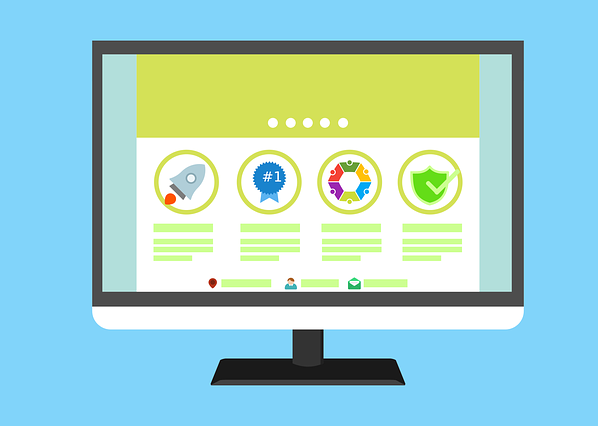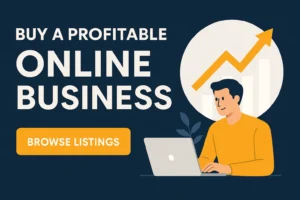Table of Contents
ToggleTraffic Bots vs. Real Traffic: Understanding the Key Differences
As an SEO specialist, understanding the nuances of website traffic is paramount to devising effective digital marketing strategies. One of the most discussed topics in this realm is comparing a traffic bot and natural traffic. While both can significantly influence your website’s performance metrics, they carry distinct characteristics and implications. In this article, we’ll dive deep into the key differences between traffic bots and natural traffic, helping you make informed decisions to enhance your website’s growth and credibility.
What is Real Traffic?
Real traffic refers to the genuine visitors who access your website. These are actual human beings who arrive on your site through various channels like organic search, direct visits, social media, and referral links. Real traffic engages with your content, spends time exploring multiple pages, and performs meaningful actions such as subscribing to newsletters, completing purchases, or sharing content.
What are Traffic Bots?
Traffic bots are automated software programs designed to mimic human visits to your website. These bots can perform various actions, such as clicking links, navigating pages, and interacting with elements on your site. The purpose of traffic bots varies and can include boosting website traffic numbers, stress testing servers, or inflating engagement metrics for advertising purposes.
Critical Differences Between Traffic Bots and Real Traffic
1. Source of Traffic
Real Traffic
- Originates from humans who have a genuine interest in your content, product, or service.
- Familiar sources include organic search results, social media posts, email campaigns, and direct URL entries.
- Examples: A user searching for “best SEO practices” on Google and clicking through to your blog or someone clicking a link shared by a friend on social media.
Traffic Bots
- Can be deployed by website owners or third parties for various reasons, ranging from testing to dubious enhancements of traffic metrics.
- Examples: An automated script that repeatedly visits your website to inflate visit numbers or a stress testing bot simulating user load on your server.
2. Behavior and Engagement
Real Traffic
- Real users interact with your site in a meaningful way, reading articles, filling out forms, or making purchases.
- User behavior is organic and varied, influenced by personal interests, needs, and search intent.
- Examples: Reading through an entire blog post, watching a video tutorial, or adding products to a shopping cart.
Traffic Bots
- Bots can simulate clicks and navigation but often need more genuine engagement. Their interactions are typically repetitive and predictable.
- Well-designed bots may mimic complex user behavior, but they still need to gain the depth of genuine user interactions.
- Examples: Bots clicking through multiple pages or filling out forms without real intent.
3. Impact on Analytics
Real Traffic
- Provides accurate data on user behavior, helping you understand your audience better and refine your marketing strategies.
- Metrics such as average session duration, bounce rate, and conversion rates reflect genuine user experiences.
- Examples: High dwell time on valuable content, low bounce rates indicating user engagement, and tracking of genuine conversion paths.
Traffic Bots
- It can distort your analytics data, making it difficult to differentiate between natural and artificial traffic.
- Metrics may show inflated numbers, which can mislead your understanding of site performance and user engagement.
- Examples: Sudden spikes in traffic without corresponding engagement, artificially low or high bounce rates, and skewed conversion statistics.
4. SEO Implications
Real Traffic
- Positively impacts SEO by indicating to search engines that your content is relevant and engaging.
- High-quality, real traffic can improve your search engine rankings and organic visibility over time.
- Examples: Consistent organic traffic growth leading to higher SERP rankings and increased backlinks from genuine references.
Traffic Bots
- It can harm your SEO if detected by search engines, leading to potential penalties or lower rankings.
- Search engines can identify unnatural traffic patterns, resulting in algorithms flagging your site.
- Examples: Instantaneous spikes in traffic followed by drops in ranking once bot activity is detected and penalties from platforms like Google.
5. Conversion and ROI
Real Traffic
- Real users have the potential to convert into customers or leads, providing measurable return on investment (ROI).
- Engagement metrics from genuine traffic offer actionable insights to optimize marketing campaigns and improve user experience.
- Examples: Increased sales from targeted traffic, higher subscription rates to newsletters, and genuine leads filling out contact forms.
Traffic Bots
- Bots do not convert into customers, making any increased traffic numbers essentially worthless from a revenue standpoint.
- Misleading conversion data from bots can result in wasted marketing spend and misaligned strategy adjustments.
- Examples: Inflated conversion rates that do not translate to actual revenue and marketing adjustments based on false data, leading to lower ROI.
Benefits of Real Traffic
- Quality Engagement: Real users provide valuable engagement by interacting with your content, leaving comments, sharing your pages, and making purchases. This organic interaction is crucial for understanding audience preferences and improving user experience.
- Accurate Analytics: Real traffic ensures that your website analytics reflect genuine user behavior. This precise data is essential for making informed decisions about content, design, and marketing strategies.
- SEO Advantages: Consistent, accurate traffic signals to search engines that your website is trustworthy and valuable.
- Revenue Potential: Unlike bots, real users have the potential to become paying customers. Their interactions can lead to sales, subscriptions, and other forms of revenue.
Risks of Relying on Traffic Bots
- Analytics Distortion: Traffic bots can corrupt your analytics data, making it difficult to gain accurate insights into user behavior and engagement. This can lead to misguided marketing strategies and poor business decisions.
- Search Engine Penalties: Search engines are adept at detecting unnatural traffic patterns. If your website is flagged for using bots to inflate traffic, you risk severe penalties, including lower search rankings or complete removal from search results.
- Wasteful Spending: Any marketing spend based on bot-driven metrics is essentially wasted. Bots do not convert into paying customers, making any budget allocated to campaigns influenced by bot traffic ineffective.
- Reputation Damage: Both search engines and users can lose trust in your site’s authenticity, leading to long-term detrimental effects.
Ethical Considerations
As an SEO specialist, it’s essential to maintain ethical standards in your traffic generation strategies. While traffic bots can offer short-term benefits, the consequences of unethical practices can outweigh any immediate gains. Here are some ethical considerations:
- Transparency: Always be transparent with clients and stakeholders about the methods used for traffic generation.
- Balance with Real Traffic: Use traffic bots sparingly and ensure they complement genuine traffic generation methods such as organic SEO, content marketing, and social media engagement. This balanced approach can enhance credibility and results.
- Avoid Deceptive Practices: Never use traffic bots to deceive or manipulate metrics with the intent to mislead clients, search engines, or partners. Aim for genuine growth and sustainable success.
Conclusion
The differences between traffic bots and real traffic are significant, impacting your website’s analytics, SEO, user engagement, and overall credibility. While traffic bots can offer temporary boosts and certain testing advantages, the benefits of genuine, real traffic are unmatched.
Real traffic provides quality engagements, accurate analytics, SEO advantages, and revenue potential, fostering sustainable growth and long-term success. Conversely, the risks of relying on traffic bots include skewed analytics, search engine penalties, wasteful spending, and potential reputation damage.
As SEO specialists, we must prioritize real traffic and maintain ethical standards in traffic generation strategies. By doing so, we can build trust, ensure long-term growth, and achieve meaningful success in the competitive digital landscape. Embracing genuine traffic over bots ultimately translates to a more robust, credible online presence that attracts and retains real users.






